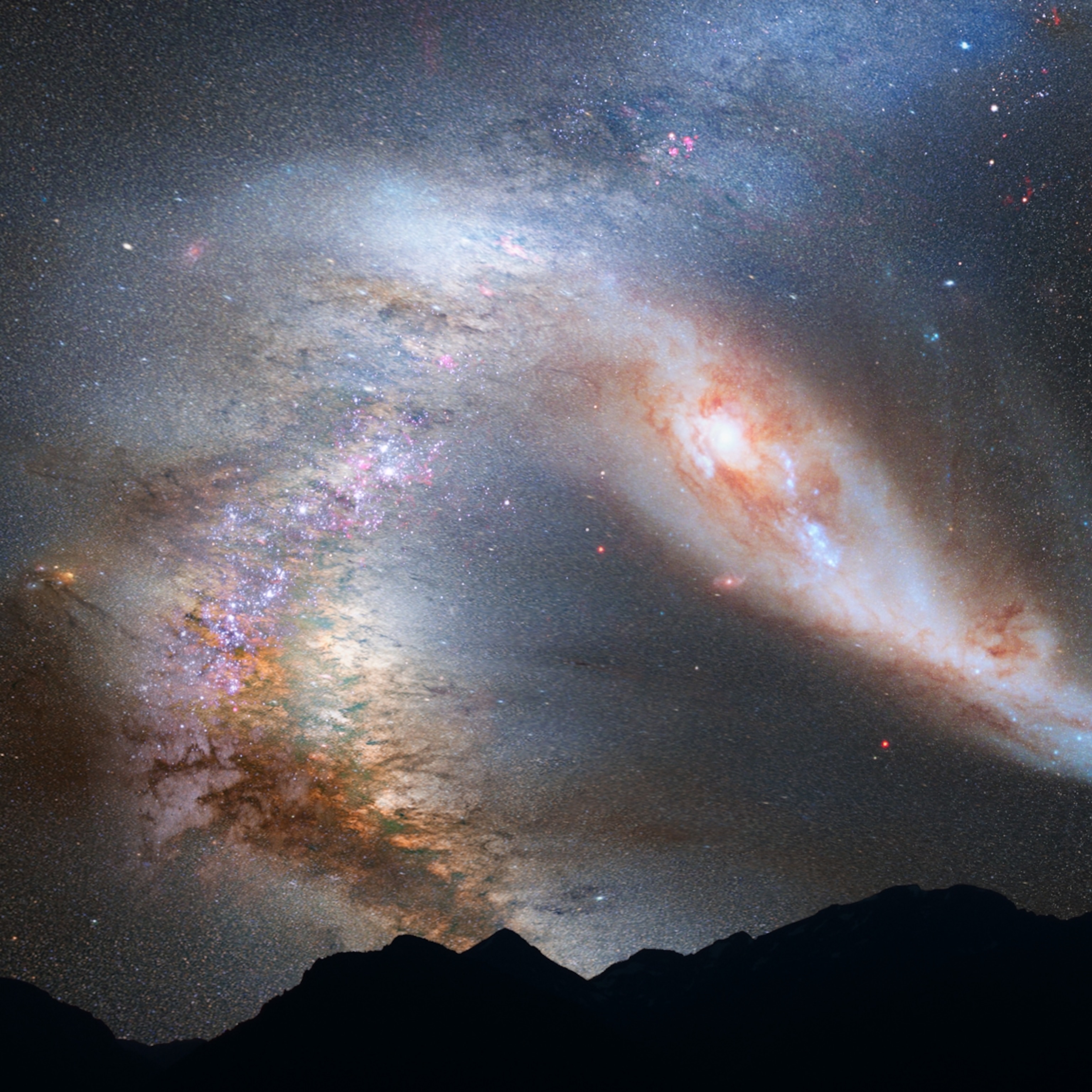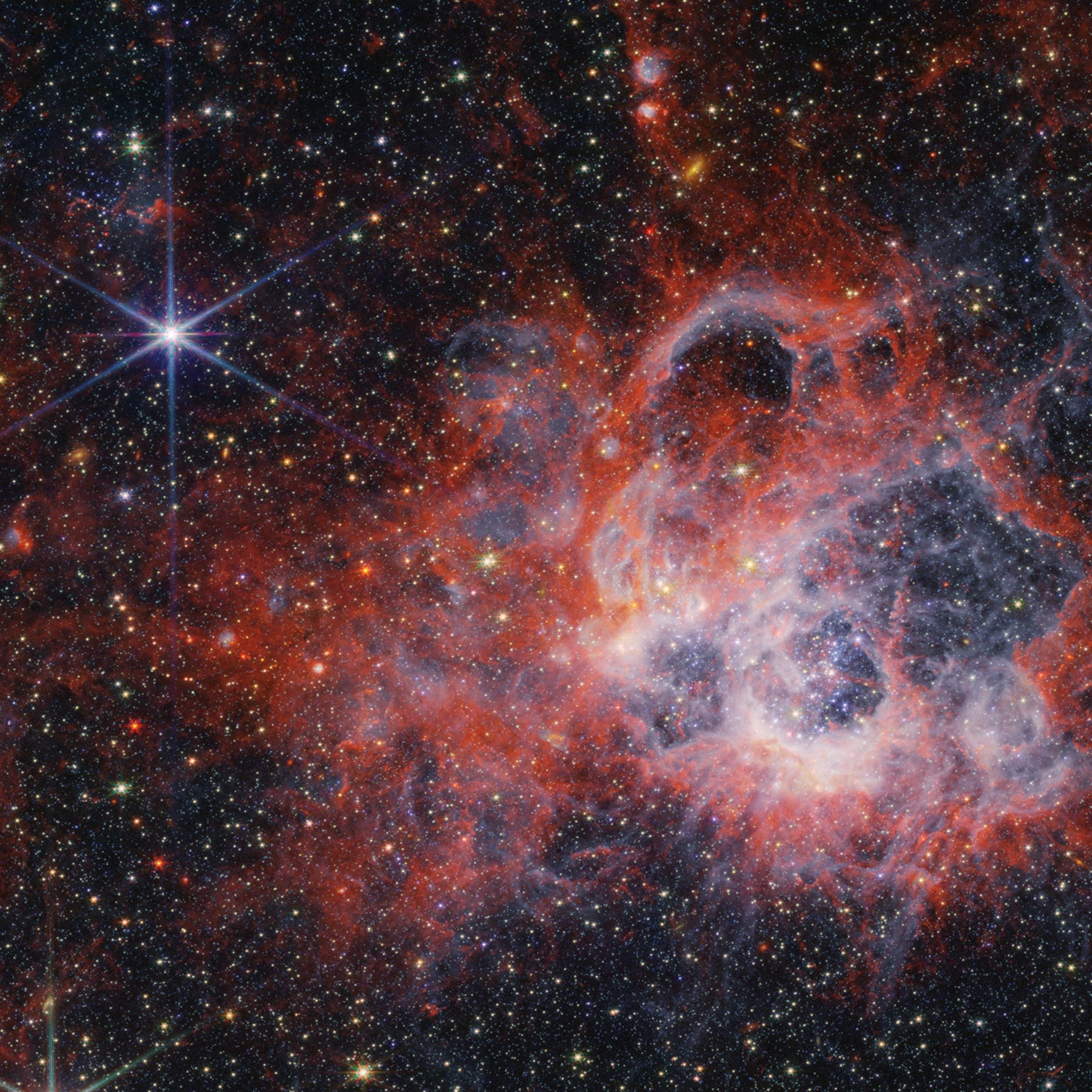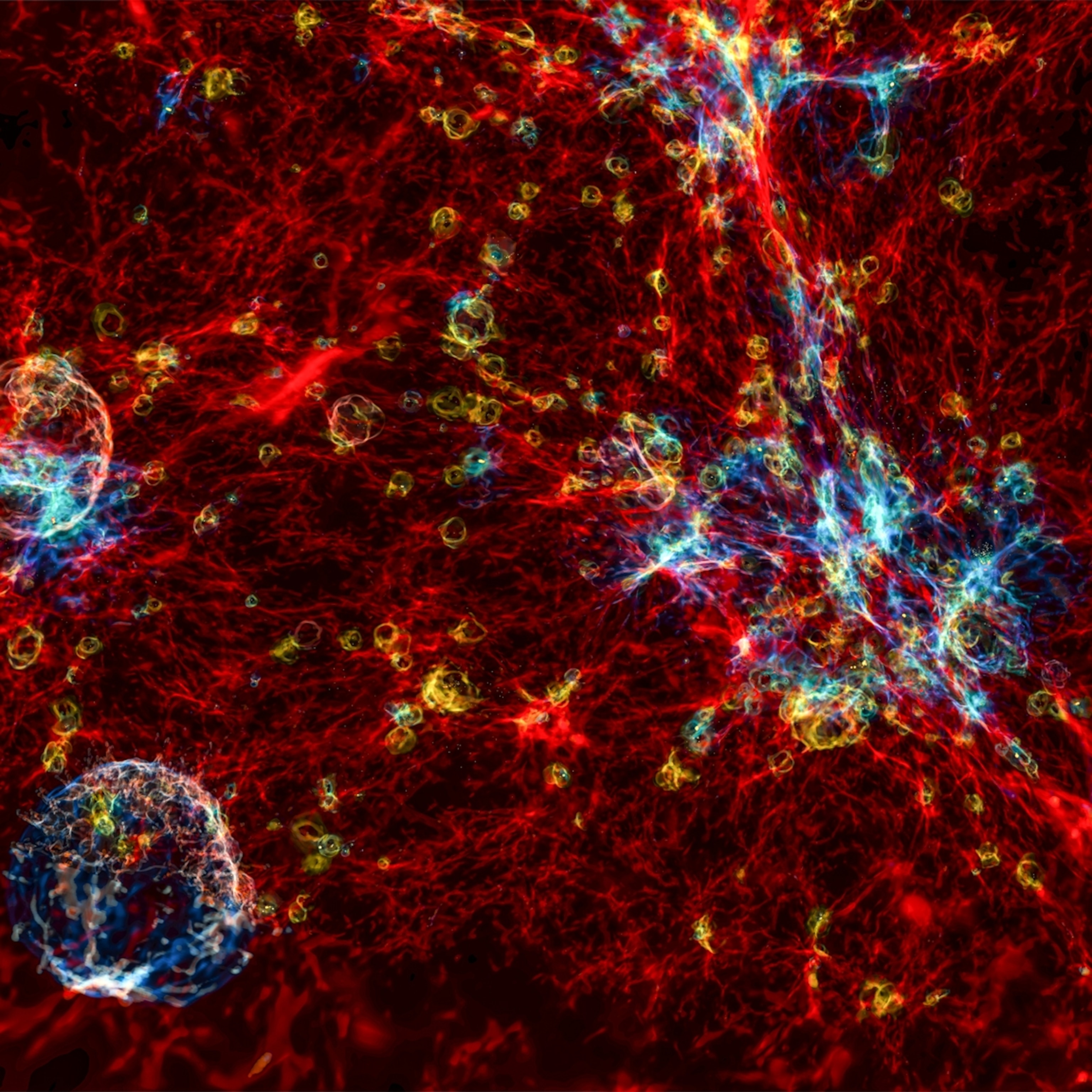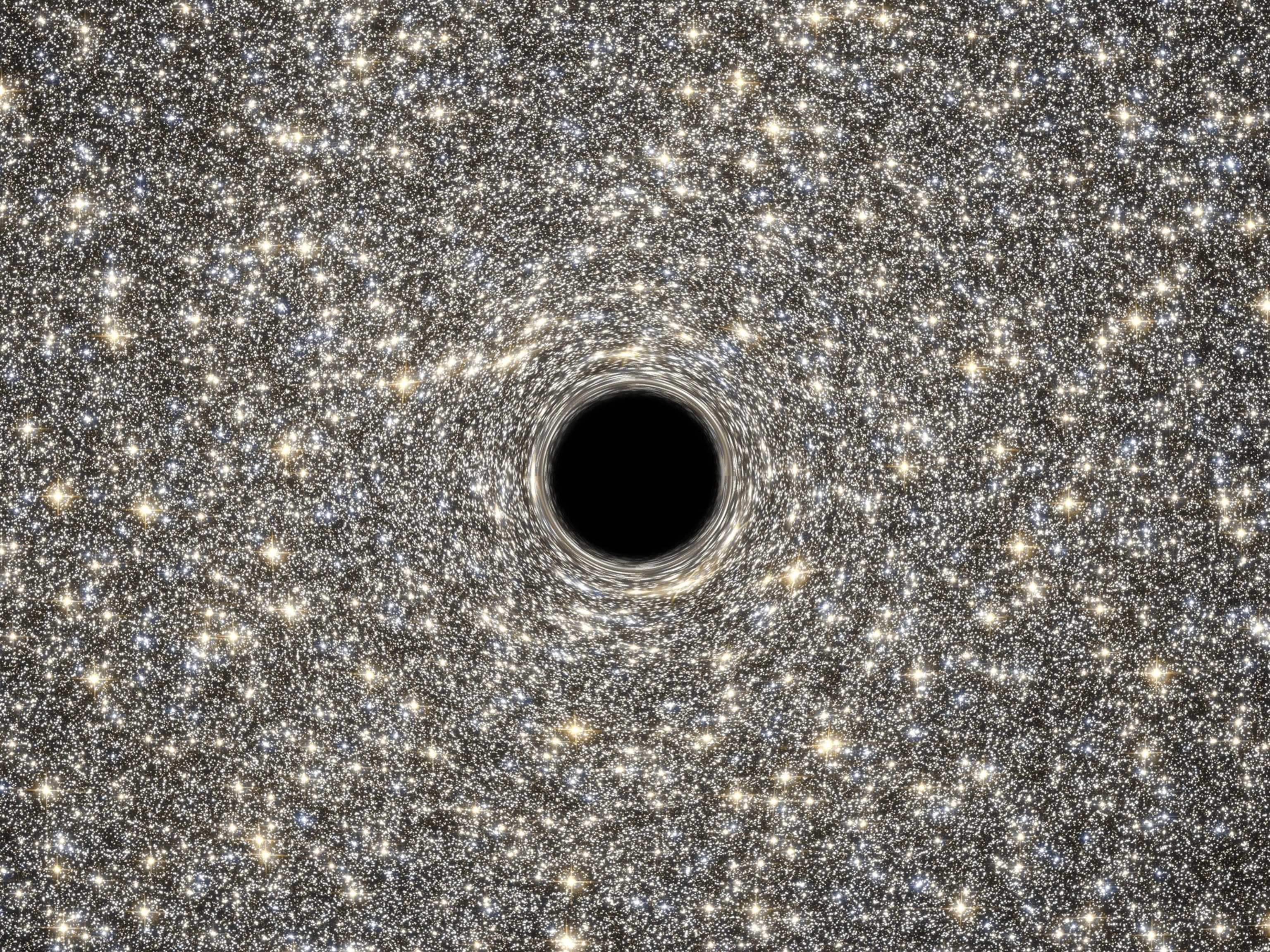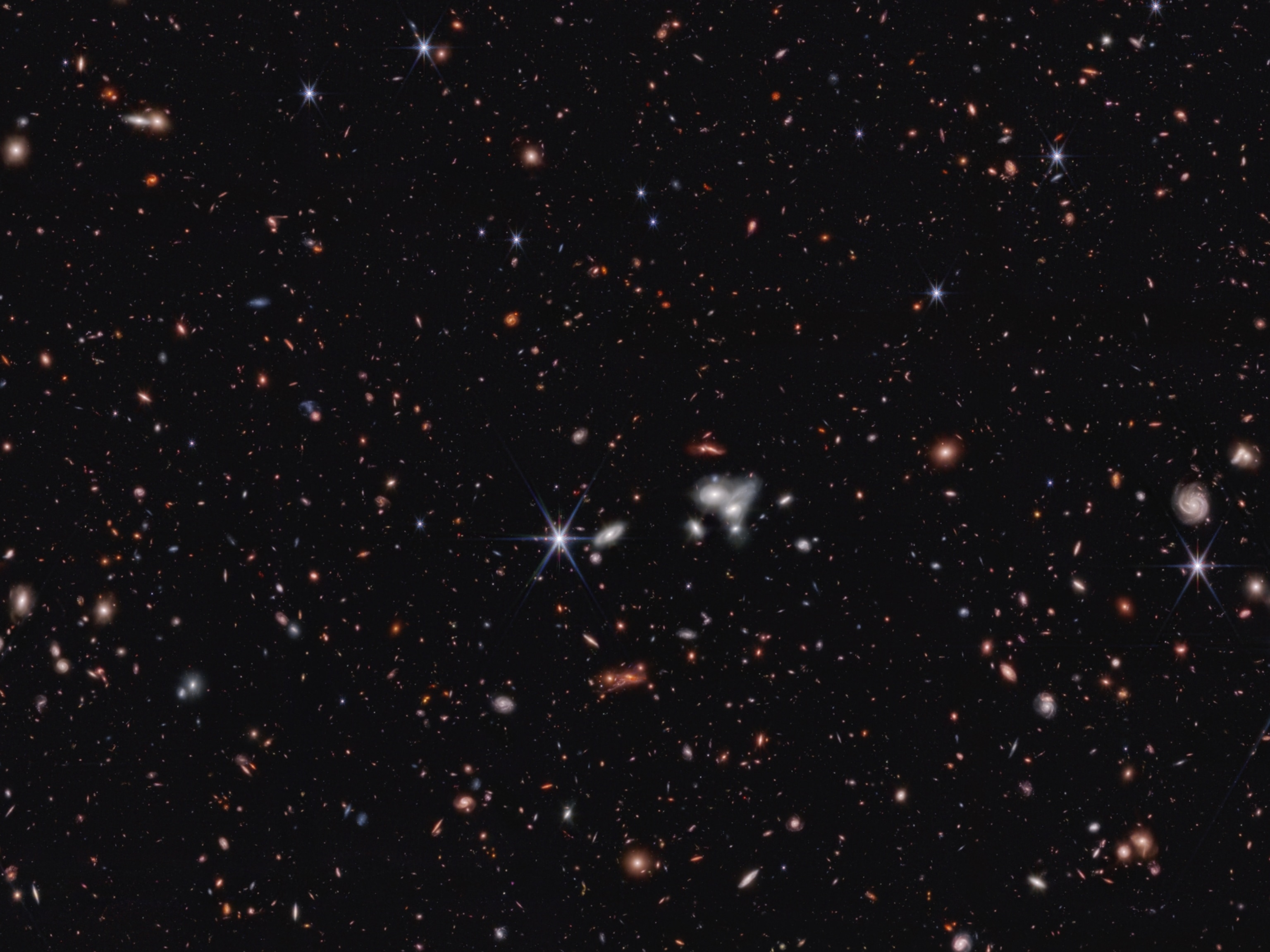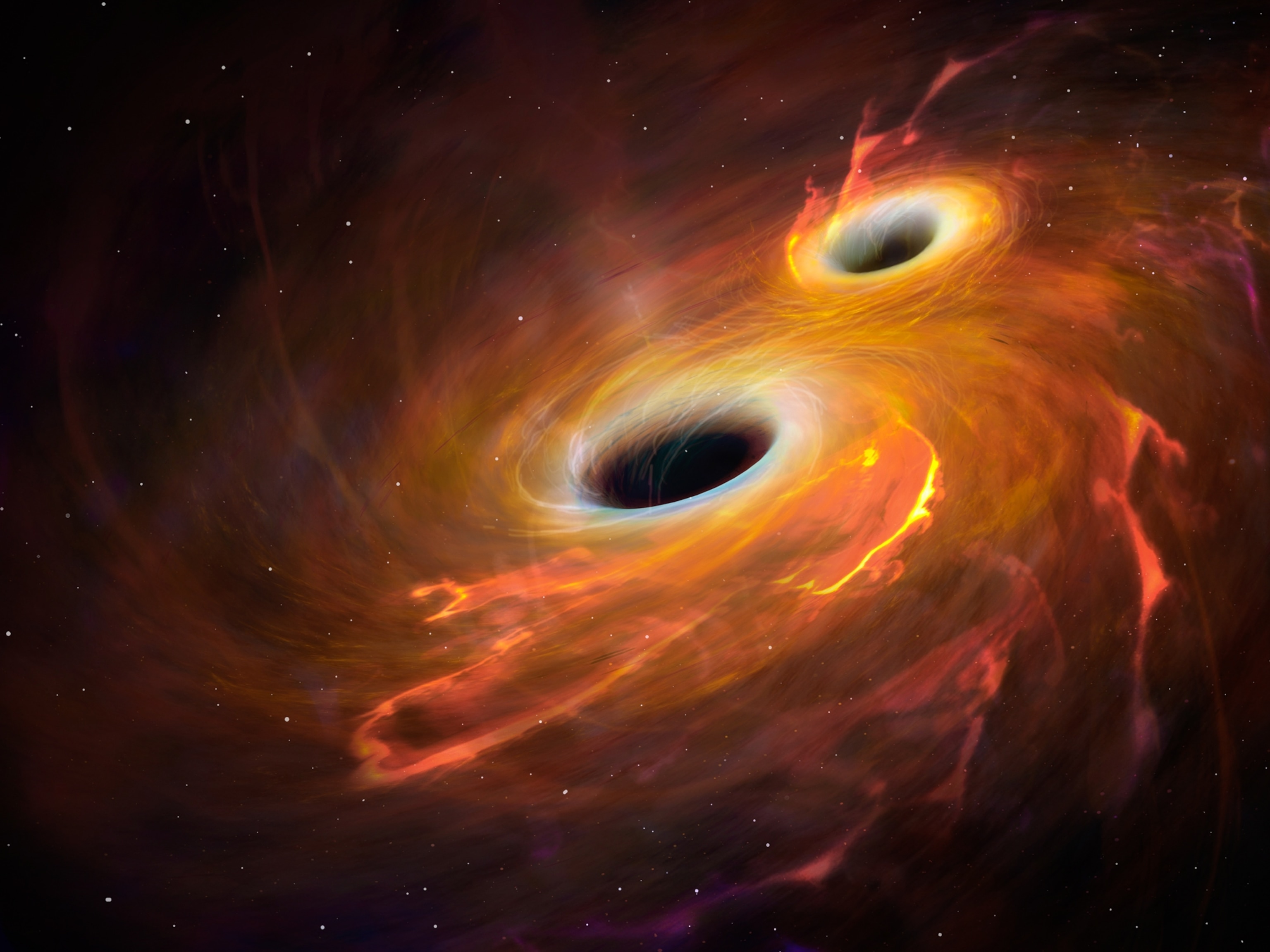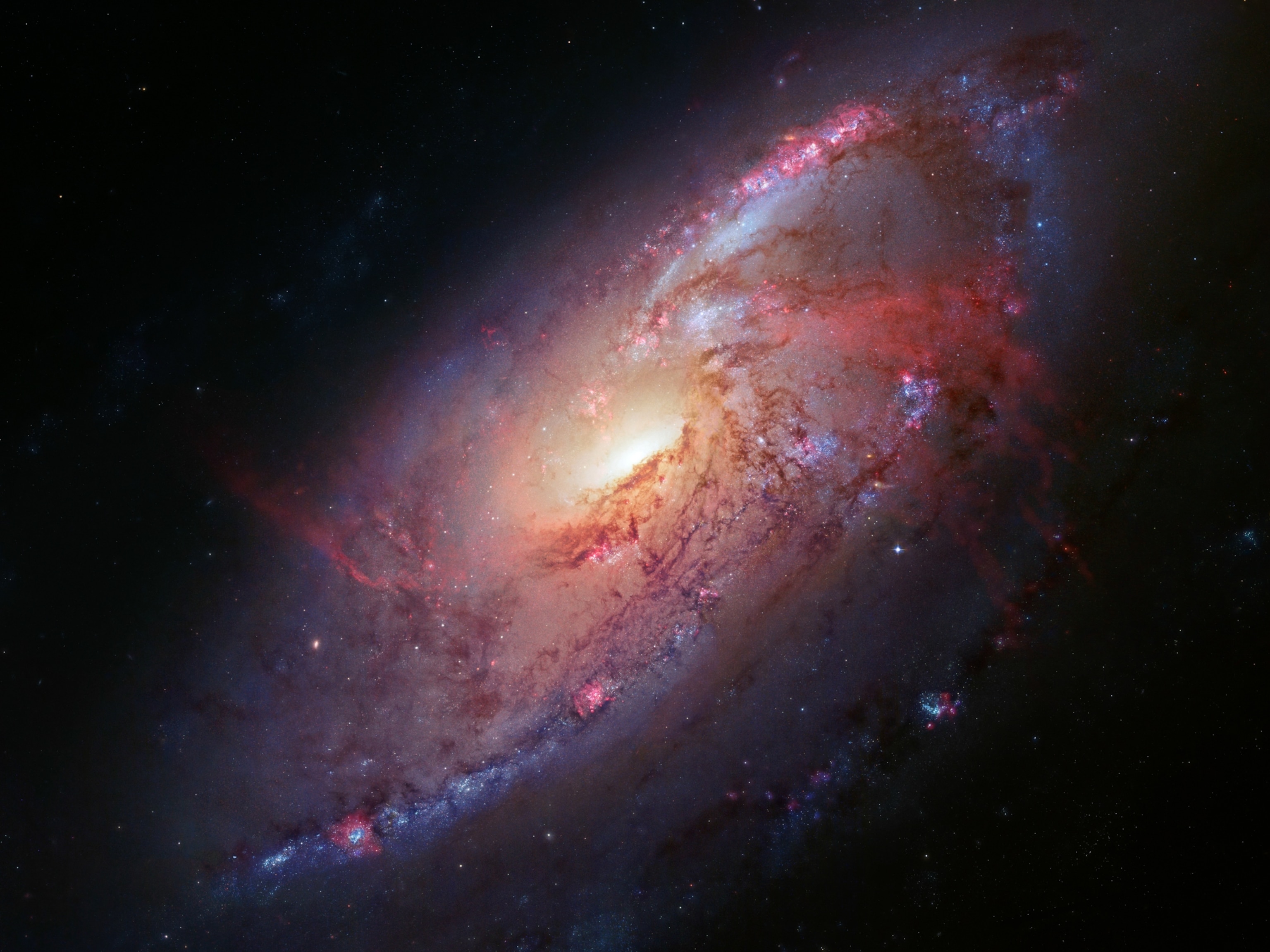Colossal gravitational waves—trillions of miles long—found for the first time
Detected by studying rapidly spinning dead stars, these giant ripples of spacetime likely came from merging supermassive black holes—and they may reveal clues about the nature of the universe.

Giant ripples in the fabric of space and time, light-years in scale, have been discovered for the first time, according to new research announced by astronomers. Gravitational waves of this scale are the kind scientists expect from merging supermassive black holes, each up to billions of times the mass of the sun.
By studying timing variations in radio bursts from whirling stellar remnants known as pulsars, scientists with the North American Nanohertz Observatory for Gravitational Waves (NANOGrav) were able to pick out these waves. The discovery, made with a natural detector spanning thousands of light-years, promises to shed light on how supermassive black holes helped shape the universe. Future research into these newfound spacetime warps may also reveal clues about the earliest moments after the big bang and help solve mysteries such as the nature of dark matter, which scientists think makes up about five-sixths of all matter in the cosmos.
When any object with mass accelerates, it generates distortions known as gravitational waves that fly out at the speed of light, stretching and squeezing spacetime along the way. Predicted by Albert Einstein in 1916, scientists discovered the first direct evidence of gravitational waves in 2015 with the Laser Interferometer Gravitational-Wave Observatory (LIGO), which senses microscopic distortions the waves create as they zip through matter. These undulations are especially useful for yielding insights on sources that cannot be seen directly using light, such as black holes.

Just as light comes in a variety of wavelengths and frequencies—from short-wavelength, high-frequency gamma rays to long-wavelength, low-frequency radio waves—so too do gravitational waves. LIGO detects high-frequency gravitational waves with wavelengths that are roughly 1,800 miles long. "It sees things that are changing on short timescales," says Sarah Vigeland, a physicist at the University of Wisconsin at Milwaukee and a member of NANOGrav.
Now scientists have for the first time detected low-frequency gravitational waves with wavelengths so long, light would take years or decades to travel from one crest to another. The scientists detailed their findings in five studies in the Astrophysical Journal Letters.
"We are starting to probe a whole new part of the gravitational-wave universe," Vigeland says. "We see things that are changing on timescales of months to years."
A galactic detector
To spot these giant ripples, scientists needed a sensor array much larger than Earth. For the past 15 years, NANOGrav has analyzed dead stars across the Milky Way to create a galaxy-scale gravitational-wave detector.
The researchers focused on so-called millisecond pulsars, which are created when massive stars die in explosive supernovae, leaving behind their rapidly spinning remains. These dense stellar leftovers blast out twin beams of radio waves from their magnetic poles, flashing like lighthouse beacons. Each time these beams sweep past Earth, radio telescopes detect a pulse, with hundreds arriving every second in an extremely precise manner, like the ticks of a galactic clock.
"We have hacked the galaxy to make a giant gravitational-wave antenna," says Stephen Taylor, an astrophysicist at Vanderbilt University in Nashville and the chair of the NANOGrav collaboration.
The scientists monitored 68 of these pulsars within a few thousand light-years of Earth. Because gravitational waves make spacetime contract and expand, they alter the spans of time between radio pulses, delaying some while speeding others in a unique and predictable manner. These variations were also seen in pairs of pulsars following a pattern that depended on the distance between each member of a pair, supporting the idea that a gravitational wave was influencing both objects and that NANOGrav was not simply detecting random fluctuations.
These shifts in time represent a flexing of space between Earth and the pulsars equal to about the length of a football field. In comparison, the spatial distortions that LIGO detects are smaller than the nucleus of an atom, and LIGO's gravitational waves carry roughly a million times less energy.
"The gravitational waves are not coming from the pulsars themselves," Taylor clarifies. "We use pulsars as part of our detector, whereby through timing those pulsars we can look for galaxy-scale spacetime warping."
Pulsars produce very faint radio sources, so to conduct this search, the researchers needed to spend thousands of hours a year observing with some of the world's largest radio telescopes—the Arecibo Observatory in Puerto Rico, the Green Bank Telescope in West Virginia, and the Very Large Array in New Mexico. This "pulsar timing array" could detect the times at which radio pulses arrived to within a millionth of a second.
Rocking the fabric of spacetime
The most likely sources of the newfound gravitational waves are pairs of supermassive black holes 100 million to 10 billion times the mass of the sun. In contrast, the gravitational waves LIGO detected likely came from collisions between smaller black holes or neutron stars with masses no more than a few dozen times that of the sun.
"Using a galaxy-sized detector made of rapidly spinning pulsars to measure years-long gravitational waves likely from supermassive black hole binaries sounds like science fiction," says Scott Ransom, an astronomer at the National Radio Astronomy Observatory in Charlottesville, Virginia, and a member of NANOGrav.
Astronomers think supermassive black holes reside at the hearts of the largest galaxies in the universe. When two galaxies merge, their central black holes eventually sink to the core of the newly combined galaxy, forming a binary system that produces gravitational waves as these behemoths slowly orbit each other.
Theoretical physicists have long debated whether such monstrous black holes could find each other after the violence of galactic mergers. It was uncertain if such pairs could ever get close enough to generate detectable gravitational waves, a question known as the "final parsec problem."
The new findings show that extraordinarily massive and close black hole binaries do exist—once these duos get close enough for pulsar timing arrays to detect, they are caught in a death spiral, doomed to collide within a few million years.
Surprisingly, the strength of the gravitational-wave signal was about twice what the researchers expected, suggesting supermassive black holes may be more common or more massive than previously thought. The findings indicate that supermassive black hole binaries must number in the hundreds of thousands in the universe, perhaps even in the millions. Such insights "should help us understand how and how often the biggest galaxies in the universe merge and grow," Ransom says.
Cosmic anomalies
Previous research suggests additional, weirder sources of low-frequency gravitational waves may exist. For instance, within a second after the big bang, random fluctuations of density in the hot, rapidly expanding universe might have concentrated pockets of matter enough for them to collapse into black holes. These incredibly massive, largely invisible primordial black holes "might form the dark matter of the universe," instead of some as-yet unknown particle, says Antonio Riotto, a cosmologist at the University of Geneva, who did not take part in the NANOGrav study.
Other possible sources include cosmic strings, extraordinarily dense filaments skinner than an atom's nucleus that some theoretical models suggest were created in the early universe when the cosmos rapidly cooled after the big bang, not unlike cracks that can form when water freezes into ice. As these cosmic strings vibrate, they may give off gravitational waves.
Gravitational waves may also have been produced during a titanic growth spurt in the first moments after the big bang known as inflation, and they could shed light on how the entire cosmos formed. Although supermassive black hole binaries seem to be the most plausible explanation for what NANOGrav has detected, "it would be very interesting to discover that the signal originated in the early universe," says Gabriele Franciolini, a theoretical physicist at the Sapienza University of Rome, who did not participate in the new work.
Other pulsar timing arrays, including ones in Australia, China, Europe, and India, have reported hints of low-frequency gravitational waves as well. "Future pulsar timing array measurements will increase the accuracy at which we see details and … tell us what is the most likely source of these gravitational waves," says Ville Vaskonen, a cosmologist at the University of Padua in Italy, who did not take part in this study.
In 2020, after the data in NANOGrav’s survey were collected, the Arecibo Observatory catastrophically collapsed. Future NANOGrav results will include data from the CHIME telescope in Canada, added to the project in 2019. "The longer we observe, the more sensitivity we get," Ransom says.
As NANOGrav collects more data over time, the researchers hope it will become sensitive enough to identify gravitational waves from specific black hole binaries, like picking out notes from single instruments playing in an orchestra, Taylor says. This would allow astronomers to combine these findings with those from traditional observatories to analyze targets using both light and gravity.
"There is always the possibility of seeing something that we didn’t even know existed," Vigeland says. "That’s probably the most exciting thing about opening a new window on the gravitational-wave universe."

